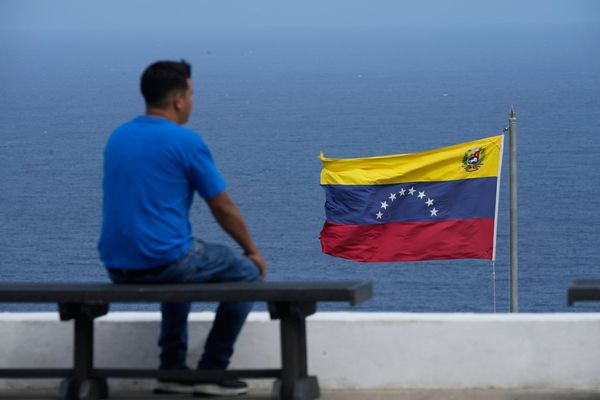
As of Friday, the plague of wildfires in Los Angeles has consumed more than 20,000 acres, destroyed roughly 13,000 buildings, forced more than 180,000 evacuations and caused at least 11 deaths. Though this is one of the most destructive disasters in California history, some have wasted no time in leveraging the crisis to further an agenda.
In the midst of the ongoing crisis, President-elect Donald Trump and his supporters in right-wing media are spreading misinformation about the cause of the fires and how future disasters can be addressed in the future. Scientists who spoke to Salon emphasized two points: The fires are being exacerbated by climate change, and the misinformation being spread about them can be dangerous.
“Climate change is 100% responsible” for the wildfires Kyla Bennett, director of senior policy at the activist group Public Employees for Environmental Responsibility, told Salon. “No question. I am very scared about our future — meaning all of us, not just Americans.”
Bennett drew attention to false claims from conservatives that the wildfires occurred because of pro-diversity DEI programs, and from Trump specifically that firefighters lacked water to put out blazes because it was diverted to protect the Delta smelt, an endangered fish. Gov. Gavin Newsom has demanded an investigation as to why the hydrants ran dry, which officials say occurred as water supplies were overtaxed. Some online conservatives incorrectly claim the fire departments lack money because of funds given to support Ukraine against Russia, while top Trump adviser and Tesla CEO Elon Musk expressed agreement with a post from conspiracy theorist Alex Jones attributing the wildfires to a “larger globalist plot to wage economic warfare and deindustrialize” the United States before “triggering total collapse.”
The narratives coming out from many Republicans on social media are "all bogus,” Bennett said. “This is climate change — they [southern California] have not received rain in eight months. This is a harbinger of things to come for much of the country. We are in deep trouble, and there is no relief in sight.”
She also expressed apprehension about the incoming Trump administration, which has a history of denying climate change and propping up fossil fuel companies. “With a climate change denier coming into office, I fear we are doomed,” Bennett said.
University of Pennsylvania climate scientist Michael E. Mann told Salon that there are “so many lies out there right now” that it is difficult to even count them. The problem is exacerbated by countries like Russia and Saudi Arabia that have bot farms pumping out misinformation to distract the public from the facts. The overwhelming majority of scientists agree that climate change is caused by human activity, particularly burning fossil fuels. The overheating planet causes droughts and heatwaves to become more frequent and more intense, sea levels to rise and hurricanes to become more extreme.
“It’s a deflection campaign aimed at preventing the people and the press from focusing on the true cause — our ongoing burning of fossil fuels,” Mann said. “They’re trying to throw as much mud on the walls as they can in the hope that we’ll ignore the real problem: fossil fuels.”
Dr. Peter Kalmus, a NASA climate scientist who emphasized his opinions are his own, added that the mainstream media is failing “terribly” to dispel false narratives.
“Some of the many narratives they aren't telling, or not clearly enough, include: these sorts of impacts are all projected to get much worse; they're caused by the fossil fuel industry; oil and gas executives have been systematically lying and blocking action for decades; [and] carbon capture and carbon offsets are dangerous distractions pushed by the fossil fuel industry,” Kalmus said.
While experts agree that climate change is exacerbating the current wildfires by creating unnaturally warm and dry conditions, they caution against saying it was the sole cause of the current blazes. Until more data is available, experts can’t attribute the entire disaster to global heating, according to University of Washington climate scientist Nicholas A. Bond.
“There is some evidence that summer dry periods in the western U.S. are liable to lengthen, resulting in longer fire seasons,” Bond said. “But we are well into winter, of course, and so I am unsure whether that aspect is so important in this case.”
Bond pointed out that the colder and weaker La Niña phase of the El Niño–Southern Oscillation (ENSO) can be “often, but not always, accompanied by relatively dry winters” in southern California. “The weather patterns over the last few months differ somewhat from those with previous La Niñas, but one can make the case that ENSO might have played a role in priming the landscape for intense fires if the wind blew strongly.”
Michael Wehner, a senior scientist in the Computational Research Division at the Lawrence Berkeley National Laboratory, agreed with Bond and other experts that climate change is lengthening the western United States fire season because the hotter temperatures make the vegetation drier and more flammable. He also noted that because there was so little rain this year (which may not have been linked to climate change), the circumstances behind the current fires are very unusual.
“Given that the effect of climate change on the Santa Ana winds is unclear, the question becomes: did climate change cause the chances of such a dry year to change?” Wehner said. “So while climate change has increased the risk of fire, quantifying its effect on this particular event is challenging. But it is important to say that scientists often can state very precisely how climate change has altered individual extreme weather events.”
Kevin Trenberth, an esteemed climate scientist who has published more than 600 articles on climatology, told Salon that experts still do not know what exactly set the current fires in motion, particularly whether or not they were human-caused. At the same time, “one should not confuse the actual cause of the start of the fire with the risk for it to take off.”
The key is to recognize that, even if scientists cannot precisely quantify the extent to which climate change caused the wildfires, it obviously played a major role in the current calamity.
“The main very robust role of climate change is the increase in surface drying,” Trenberth said. “This is the increase in surface evapotranspiration. As the atmospheric temperatures increase, they suck more moisture out of plants and the surface at a rate of about 7% per degree C (4% per deg F). They carry that moisture away and, in the absence of rainfall, lead to wilting and drought conditions, and increased risk of wildfire.”
Mann agrees with the consensus view that “climate change played a clear role here.”
“The unusually dry conditions in southern California are part of a longer-term pattern of longer dry seasons and late winter rains, due to human-caused climate change,” Mann said. “The dry season now extends well into winter, where it is more likely to overlap with the offshore wind/Santa Ana season. It was the confluence of these two things that was behind these devastating, fast-spreading, record damage-causing fires.”
He added, “All of this gets worse as we continue to warm the planet, underscoring the urgency of moving away from fossil fuels as quickly as possible.”
Juan Declet-Barreto, a senior social scientist at the Union of Concerned Scientists, said that people who want accurate information about how to get assistance can go to government links or reliable local sources. He urged concerned citizens to learn about climate change rather than listen to partisan outlets.
“Younger people everywhere should expect only more of this chaos and loss, so long as climate change continues to deepen fire conditions and other climate extremes,” Declet-Barreto said. “Meanwhile, fossil fuel companies are eagerly expanding production and profits. The injustice can’t be overstated.”







